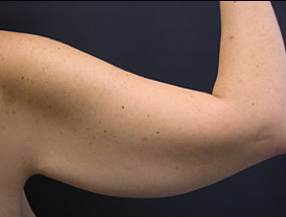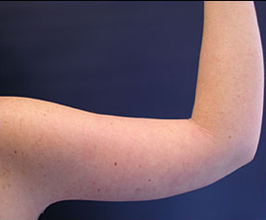LIFTING ARMS AND THIGHS

The lifting of legs or arms surgery is to obtain the reduction of fat and loose skin.
Performing a surgical lift and removing the fat and excess skin then reshapes the tissue.
The operation runs under local anesthesia when usually it is completed under general anesthesia.
When considering lifting Arms and Thighs
It can happen that after a strong diet we lose fat, but the skin does not withdraw and form folds anti-aesthetic on arms and inside the legs. The phenomenon is largely constitutional and skin aging gradually loses its elasticity.
The folds do not disappear by themselves and it is pointless to continue with other diets, massage, exercise, or liposuction.
One other possible fix is given by the removal of fat and excess skin through surgery.
What results expected from lifting Arms and Thighs
The surgical removal of skin and fat unfortunately entails long scars but also remains the only solution to this type of problem. After the intervention not only bodily proportions are more proportioned, but also the mental and physical well-being improved considerably.
Before deciding on this surgery always be sure that you have exhausted all other possible methods to correct the factor.
Anesthesia and recovery
Only a small facelift can be performed under local anesthesia at your plastic surgeon’s office.
When the intervention is more complicated we proceed under general anesthesia or local clinic and the recovery time is estimated to be 1 day.
Pre-surgery analysis by the anaesthesiologist will be made in the same clinic the day before.
Precautions for the first intervention
To minimize the risks and complications follow closely the instructions of your surgeon before and after the procedure.
Communicate briefly if you have allergies or other chronic diseases. If you bruise easily or if usually bleed excessively in case of a small injury, will require some analysis to exclude difficulties of your blood to clot.
If you suffer from vascular disease, varicose veins embolic thrombosis there will be taken precautionary measures.
Smokers should quit smoking at least 4 weeks before the intervention because the smoke adversely interferes with the process of healing.
They are aspirin-type painkillers that should not be taken during the two weeks before the intervention because their active ingredient interferes with blood clotting and can cause excessive bleeding.
You must avoid all alcohol and sleeping pills.
You can protect and prepare the skin of the area by applying special creams, massaging, and stimulating circulation with cold showers.
Intervention process
Before the surgeon gives the anesthesia he measures and marks with precision the portion of skin to remove. The area is properly disinfected. A special liquid vasoconstrictor reduces bleeding during surgery. During anesthesia, the fat and excess skin are eliminated.
For leg lifting, there is a distinction between a "small" horizontal lifting, where a cut that goes from the groin to the leg, and a "large" vertical lifting with a cut that goes from the groin area to the inside of the knee.
For the arms, the cut is always made from the underarm until down to the elbow. Often then proceeding to a partial liposuction. The under muscles are tense.
Through the suture, we obtain the final stretch of the skin. To avoid the risk of accumulation of blood or fluid we apply drainage for a day or more. Also during the anesthesia, we proceed to apply a bandage slightly on the area.
What happens after the intervention
Immediately after the intervention, you will be given to administer painkillers for relief and to relax. To avoid the risk of embolism wear socks with elastic or preventive drugs. You will be asked to perform isometric muscular exercises to stimulate the circulation and the oxygen of the tissues.
Exercise only what is indicated by your doctor, wear a slight compression on the area, and regards the intervention on legs wear elastic stockings or body during the day for 6 weeks. Cold showers stimulate the healing process.
The absorbable stitches diminish on their own, and the others will be removed after 3-6 weeks.
After about 10-14 days the swelling will almost be totally regressed and the suture disappeared. After a few weeks, it will be completely healed.
Possible complications
The healing of the wound, which is very long, in rare cases can be slowed by oedema or bacteriological infection. The sensitivity of the skin and the drainage of lymphatic fluid regenerate only gradually over a period of several months and may remain low in the region of a scar.
A significant loss of blood is solved with infusions or in extreme cases with blood transfusion. Thrombosis and embolism are very rare but can weigh significantly on the movement and breathing.
Very evident scars can be corrected with a little retouching surgery.
Precautions after intervention
Drive with caution for 6-8 weeks after the end and avoid putting tension on the suture.
Typically, depending on the amount of intervention, you can return to work after about 1-3 weeks and return slowly to your other sports and activities after two weeks.

Before intervention

